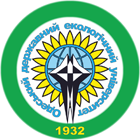Authors: Ivanov S. V., Ruban I. G., Palamarchuk Yu. O.
Year: 2017
Issue: 22
Pages: 14-20
Abstract
The further development of the data assimilation system in the operational numerical convective-permitted HARMONIE model is presented. Radar measurements of reflectivity are included in the observational model. In the focus of the study is the following: firstly, the general contribution of radar data assimilation into quantitative forecasts of precipitation; secondly, comparison of the results of numerical experiments obtained with the use of various pre-processing methods of reflectivity in a measurement tracking system. Two methods of pre-processing, such as “simple thinning” and “superobservation” are applied for reducing the amount of input data. Comparison of test numerical experiments with radar data versus reference one, in which the radar measurements are not included in the data assimilation module, is performed, The results show that accounting reflective characteristics of the atmosphere at the model initial conditions allows to increase the accuracy of microphysical processes simulations due to correction of the moisture content in the middle troposphere. For a severe precipitation event, the test experiments provide estimates of 10 mm / 12 hours higher in comparing to the control one. Vertical profiles of moisture content show that the major changes occur in the layer between 850 and 600 hPa. In the precipitation core, rain rate increases roughly at a value of 5-7 mm / h. Correction of moisture content in the middle troposphere leads to increasing quantitative precipitation estimates at the surface and approaching them to retrospective analysis values. However, the results of numerical experiments are sensitive to the choice of a pre-processing approach and internal parameters. Optimization of this choice by accounting for the resolution of the model grid and spatial features of the atmospheric flow will be performed at the next stage of the study.
Tags: atmospheric Harmonie model; data assimilation; precipitation; weather radar; асиміляція даних; асиміляція даних; метеорадар; метеорадар; модель атмосфери Harmonie; модель атмосфери Harmonie; опади; опади
Bibliography
- Kalnay E. Atmospheric Modeling, Data Assimilation and Predictability. United Kingdom: Cambridge University Press, 2003. 341 p.
- Lorenc A. C. Analysis methods for numerical weather prediction. Quart. J. R. Meteorol. Soc., 1986, no. 112, pp. 1177–1194.
- Ivanov S., Palamarchuk J. Fine-scale precipitation structure of a cold front and the problem of the representativeness error. Advances in Geosciences, 2007, no. 10, pp. 3–8.
- Liu Z. Q. Rabier F. The potential of high-density observations for numerical weather prediction: a study with simu-lated observations. Quart. J. R. Meteorol. Soc., 2003. no. 129, pp. 3013–3035.
- Desroziers G., Ivanov S. Diagnosis and adaptive tuning of information error parameters in a variational assimilation. Quart. J. R. Meteorol. Soc., 2001, no. 127, pp. 1433–1452.
- Berger H., Forsythe M., Eyre J., Healy S. Proceedings of the seventh international winds workshop. Helsinki, Finland, EUM, 2004, p. 42, pp. 119–126. www.eumetsat.int/ Home/Main/Publications/
- Seko H., Kawabata T., Tsuyuki T., Nakamura H., Koizumi K. Impacts of GPS-derived water vapor and radial wind measured by Doppler radar on numerical prediction of precipitation. J. Meteorol. Soc. Jpn., 2004, no. 82, pp. 473–489.
- Salonen K., Jarvinen H., Haase G., Niemela S., Eresmaa R. Doppler radar radial winds in HIRLAM. Part II: Optimizing the super-observation processing. Tellus, 2009, vol. 61 (2), pp. 288–295.
- Bengtsson L., Andrae U., Aspelien T., Batrak Yu., Calvo J., de Rooy W., Gleeson E., Hansen-Sass B., Homleid M., Hortal M., Ivarsson K.-I., Lenderink G., Niemelä S., Nielsen K.P., Onvlee J., Rontu L., Samuelsson P., Muñoz D. S., Subias A., Tijm S., Toll V., Yang X., Køltzow M. O. The HARMONIE-AROME model configuration in the ALADIN-HIRLAM NWP system. Mon. Wea. Rev., 2017, no. 145, pp. 1919-1935.
- Seity Y., Brousseau P., Malardel S., Hello G., Bénard P., Bouttier F., Lac C., Masson V. The AROME-France Convective-Scale Operational Model. Mon. Wea. Rev., 2011, no. 139, pp. 976–999.



